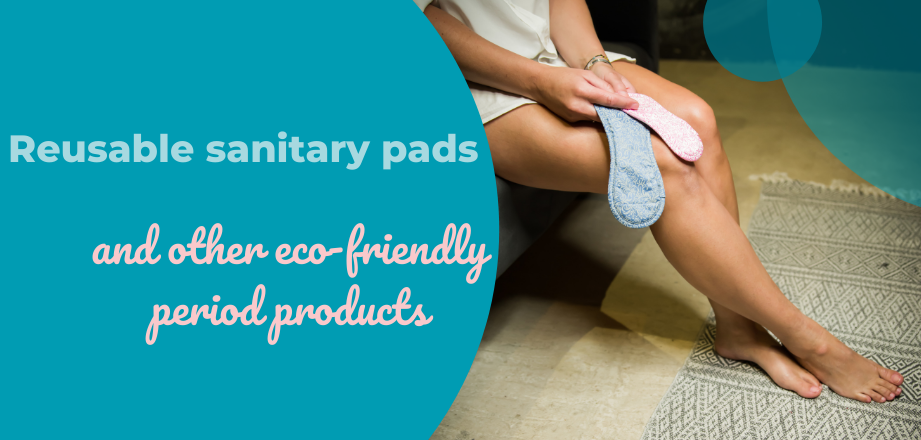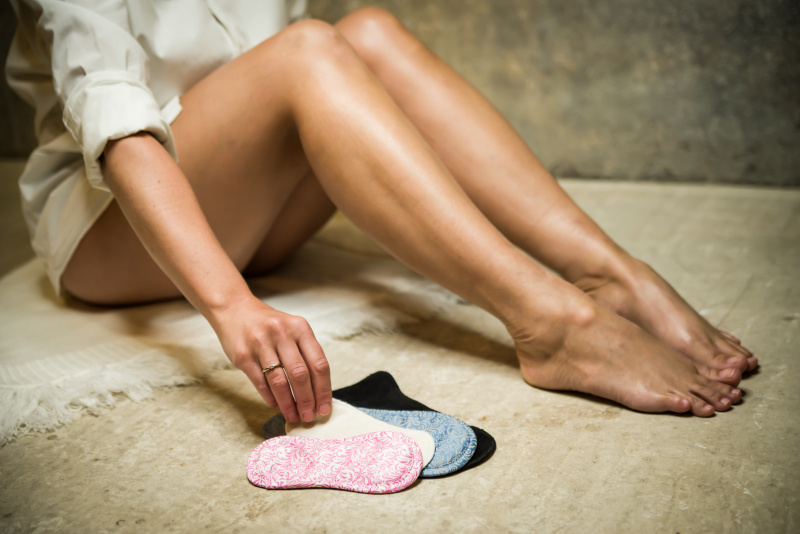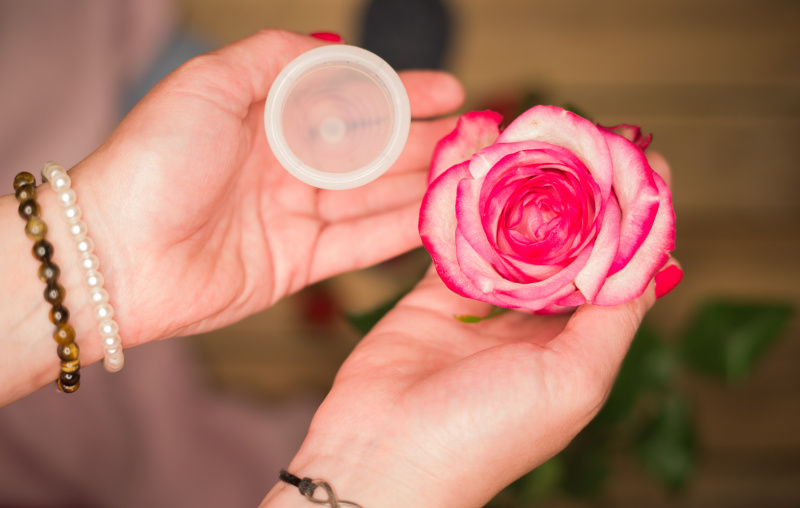Menstrual cup or reusable pads? Or maybe period pants are the best choice? If you’re thinking about switching to an eco-friendly alternative of disposable menstrual products, read this article—we’ll tell you all we know about available options.
Internal vs External
All period products (disposable as well as reusable) fit into one of these categories:
- external period products (sanitary pads, panty liners or period pants),
- internal period products (tampons, menstrual cups, menstrual sponges).
There are people who prefer internal period products and can’t stand external ones. Then there are those who are exactly the opposite, and some of us don’t mind combining the two types.
Before you start considering a reusable alternative to your standard period solution, be honest with yourself. Which group do you belong in? If you hate tampons, you will hate menstrual cups, too. Don’t push yourself into something you don’t feel comfortable in.
Reusable Sanitary Pads
Let’s start with the most classic external period products—sanitary pads. Modern reusable sanitary pads are not just average piece of cloth! Their biggest advantage are modern fabrics that make them very absorbing, very breathable and very waterproof. They’re really comfortable (they’re basically just one more layer in your underwear) and 100% reliable.
Reusable sanitary pads can help you get rid of repeated gynaecological infections and inflammations if you suffer from them—thanks to their breathability and thanks to the fact that they don’t dry your skin out.
Cloth sanitary pads are perfect for everyone, including people with heavy menstrual flow. You can change your pads exactly as often as you need to and there are multiple pad sizes (with varying absorbing capacity) to choose from. Including maternity or overnight pads.
In case you use panty liners on a daily basis, we highly recommend converting to cloth! Their breathability will provide a new level of comfort for you.
Period Pants
Can be described as “functional” underwear, with an integrated pad inside them (both absorbing and waterproof).
Period pants are pleasing to the eye (you can’t really tell the difference from regular underwear) and super easy to use (just put them on :-)). They’re the best choice for medium to light menstrual flow.
We wouldn’t recommend period pants when you tend to bleed heavily, especially not in colder months. With a heavy flow, it’s necessary to change into a fresh pair of pants at some point during the day. Doable in summer, when you’re wearing skirts and sandals. Taking off all your winter layers (including shoes!) seems to us like too much of a stretch.
Menstrual Cup
The first eco-friendly alternative of internal period products we’d like to mention, similar to tampons. Menstrual cups are made of medical silicone which makes them definitely healthier than regular tampons. Tampons made of conventional cotton often contain trace levels of herbicides, pesticides or even bleaching agents (mostly chlorine). Ironically enough, any use of chlorine has been banned in the textile industry a long time ago; but you’re still allowed to use it to bleach hygienic products like tampons (intended for internal use!).
Menstrual cup eliminates the risk of developing TSS = the toxic shock syndrome, often associated with the use of tampons.
The biggest pro of a menstrual cup is that those with medium to light menstrual flow need to pull it out, empty it and put it back in just twice a day (usually morning and evening, in the comfort of your own home). During the day, you don’t have to worry about your cup at all. It’s also the best choice for your swimming or yoga practice (if you’re upside down or twisted most of the time, external menstrual products might be overcome by gravitation).
The main con of the menstrual cup is its inserting and pulling it out—it needs some practice. That’s why we wouldn’t recommend it for girls who have just recently got their period.
Menstrual Sponge
It’s a sponge in your pants! Or a bit further :-) A sea sponge, an organic matter that absorbs liquids very well. It’s used the same way as a menstrual cup or a tampon —internally. After use, you need to rinse it in cold water and let it sit in water with added sea salt and a few drops of Tea Tree Oil for at least 5 hours. Then you let it dry and you can use it again. Which means you will definitely need more than just one sponge (contrary to just one menstrual cup).
Menstrual sponge doesn’t last as long as a menstrual cup (sponge: about 6 months, cup: years). On the other hand, you cannot get more natural than sponge during your period.
There’s also another benefit of the menstrual sponge: you can have clean sex with it. (Sorry if we’re being too personal. But sex is a natural part of life and we thought not telling you about this beneficial feature of the menstrual sponge wouldn’t be fair :-)).
It’s worth it!
In our book, eco-friendly period products are the future. They save your money, they save the environment, they’re better for your health.




